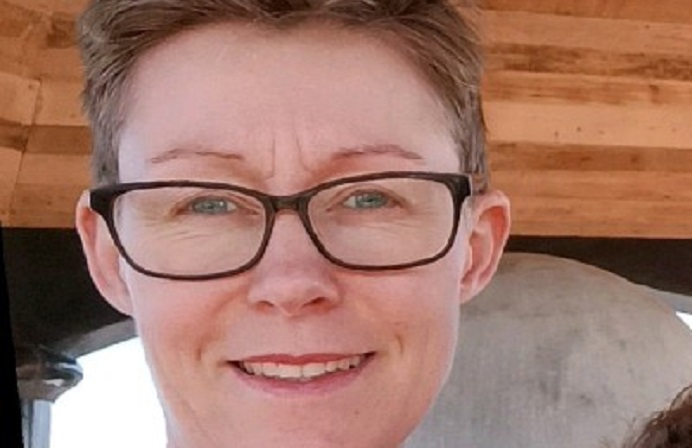
Changes in the financial services regulatory landscape have provided Symple and other fintechs with a major advantage by enabling competition with large, traditional financial services organisations.
Marketplace (or peer-to-peer) lenders have emerged with force over the last decade. While their rise is no doubt a response to growing consumer demand for alternative finance and investment options, particularly in a stubbornly low-interest rate economy, this new breed of lenders is also a clear product of a burgeoning digital economy – indeed, without the dynamism and adaptability of modern, cloud-native infrastructure, they likely would not and could not exist.
Tracking the fintech’s rapid growth and future prospects, Symple’s chief technology officer, Luke Rankin, offers essential lessons on building a successful cloud-native lender from the ground up, and why P2P lending is here to stay in Australia.
FST Media: Symple pitches itself as a “new kind of lending company”. Whether it’s simply a matter of offering more competitive lending rates or a complete reimagining of the customer experience, what makes Symple stand out from the competition?
Rankin: Primarily, I think it’s our ability to minimise inconvenience to our customers through a streamlined and automated loan application process. This, and our competitive and personalised interest rates, are what sets us apart from others in the market.
This simplicity, and a great online experience, resonates well with customers. Our most recent NPS score (Q4 2020) was 79, the highest since we launched.
We are known for our excellent customer service, responsiveness, and ongoing account management features. For example, SMS reminders about upcoming payments, repayment frequency options, and loan top-ups.
Also, we’re not constrained by obsolete and legacy technology of traditional lenders and that freedom means we can constantly innovate and enhance each step in the customer journey/experience.
FST Media: As a P2P lender, you not only need to serve your borrowers but also a growing force of investors, both private and institutional. How is the company leveraging its technology resources, particularly its all-cloud infrastructure, to ensure all clients are served seamlessly and innovatively?
Rankin: Striving to give our customers a seamless and innovative personal lending experience is the core of what we do at Symple Loans, and we’ve been able to achieve this without directly owning or operating any technology infrastructure.
Being entirely cloud-based allows us to quickly and easily integrate with leading enterprise cloud platforms such as Cloud Lending Solutions, Salesforce, and Snowflake. Access to enterprise-grade platforms for an emerging fintech is a key source of competitive advantage and helps us deliver a best-in-class user experience.
We lean on our Technology Principles to help guide the adoption and integration of these new cloud platforms:
- Cloud-only – native adoption of cloud & SaaS technology as a strategic enabler, without any direct ownership or management of infrastructure.
- Experience-oriented – deploy innovative technology to create a seamless customer journey by enabling good credit decisions while minimising inconvenience during the application process.
- Secure and reliable – adopt highly resilient and reliable enterprise platforms with strong underlying security controls.
- Automation from the start – establish baseline automation of operational and business processes from the start.
- Scalable & cost-effective – ensure all technology solutions and architecture is fully scalable to underpin business growth, without material/upfront costs.
FST Media: Launched in 2019, Symple was built, essentially, from the ground up. What infrastructure hurdles did you face in creating a new, digital-only lender for the Australian market? Are there any lessons you can impart to others embarking on this journey?
Rankin: Creating a new, digital-ready and online-only lender certainly didn’t come without challenges.
A major focus during the build phase was to optimise the customer mobile experience.
Nearly 80 per cent of customers use mobile devices to apply for personal loans, so prioritising CX design was essential across various mobile devices and platforms.
We also came across some non-technical challenges, which were more related to a shift in mindset and ways of working. The jump from a traditional banking environment to a fintech startup is huge.
If I could share my top five lessons, they would be:
- Don’t reinvent the digital wheel
The fintech ecosystem is now highly specialised and evolved. It’s unlikely that you’ll need to build something from scratch. In most cases, any incremental gain in ‘build your own’ is likely to be absorbed due to cost or delays in time to market.
- Prepare to learn and adapt, and apply technology solutions at speed
As technology evolves, and under time pressure, be ready for a continuous cycle of ‘learn and apply’. If you’re not prepared to be hands-on, then fintech is probably not for you.
- Forget traditional boundaries between business and technology
An integrated team with cross-domain expertise in operations, technology, and business is essential to success. It accelerates the delivery process and helps build quality into the final product and services.
- Agree on a set of guiding technology principles
Key strategic decisions about the selection, use, and deployment of technology can be guided by defining and agreeing to a set of principles upfront.
- Expect to change direction and priorities daily
It’s likely that the business model will evolve rapidly, and technology needs to adapt as quickly as the priorities shift.
FST Media: Regulatory obligations have tightened considerably in recent years, particularly in the wake of Covid, with the watchdogs mandating regular credit, security, and financial data collection and reporting. What processes have you put in place to ensure you’re meeting these obligations?
Rankin: Changes in the financial services regulatory landscape have provided Symple and other fintechs with a major advantage by enabling competition with large, traditional financial services organisations. For example, the Open Banking changes in Australia meant we could participate in comprehensive credit reporting (CCR), allowing us to manage credit risk effectively and provide personalised and competitive rates to our customers. Those changes underpin and are critical to Symple’s business model.
Our leadership team also comes from a background in traditional, large organisations and recognise the important role that regulation plays in the long-term success of the company.
It’s given that regulatory obligations such as responsible lending practices, risk appetite, protection of personal information, are broadly accepted as good practices for managing risk, including systemic risk to the industry.
FST Media: What one digital innovation have you been most proud to deliver at Symple?
Rankin: Our team built and launched an entirely new broker portal from scratch over a three-month period.
The launch of the new broker portal in January has opened a new and significant business growth channel by providing brokers with a raft of features to help them service their client base better with Symple products.
FST Media: The rapid emergence and then sudden retreat of the digital-only neobanks does not augur well for alternative finance companies. Symple does, however, appear to have maintained the wind in its sails, earlier this year securing a $15 million (Series D) Capital Raise.
Looking at your 2021 innovation agenda, what is Symple doing to ensure it can remain relevant and competitive against well-resourced incumbent lenders?
Rankin: 2021 will focus on growth opportunities through digital customer acquisition, expansion of the broker channel, and the continued evolution of the customer journey. We’re also going to make investments in cloud database technology to enhance credit analysis, marketing optimisation, and provide the foundation for advanced analytics and machine learning.
FST Media: A healthy workplace culture is critical to maintaining an innovation-friendly and motivated workforce. How have you sought to nurture a forward-thinking and inspired workforce?
Rankin: Innovation is central to our delivery of a better, faster, and easier personal lending experience to Australians. I love working in a fast-paced environment, surrounded by a highly experienced team who are committed to the success of the business.
From the start, there has been a strong ethos of continuous improvement and innovation.
Everyone at Symple has bought into this ethos, and it’s great to see the investment community support this culture in our recent funding round.
FST Media: What lessons have you taken from your innovation heroes – those ‘leading lights’ that have shaped your approach as a technology leader?
Rankin: All of my current innovation heroes are from the ranks of science and technology. They’re all leaders in their field and have relentlessly challenged assumptions and the status quo. Aside from their own leadership and innovation, each has provided the foundation for further leaps forward in their respective fields.
Richard Feynman is an American Physicist, a fascinating character and winner of the 1965 Nobel prize for physics for his work in Quantum Electrodynamics. He investigated and determined the cause of the Challenger Space shuttle disaster. Feynman famously said, “There is no authority who decides what is a good idea” and, as such, Feynman’s brilliance as a physicist was only matched by his ability to educate and engage people of diverse backgrounds.
Kizzmekia Corbett, an American Viral Immunologist. She was central to the development of the Moderna mRNA Covid-19 vaccine. Building on previous research, her team partnered with Moderna to produce one of the successful Covid-19 vaccinations early in the pandemic. She has a strong presence on Twitter and has been relentless in her leadership throughout the pandemic in advancing the development of the vaccine, and therapeutic treatments.
Benoit Dageville & Thierry Cruanes (Snowflake co-founders). Both founders are from a bigtech background that transformed database architecture for the cloud, wrapped in a disruptive business model. The market recognised the potential, and Snowflake listed on the New York Stock Exchange as the largest software company to IPO in US history in September last year. It’s people like Dageville and Cruanes who are true technology disruptors, and it’s this type of groundbreaking innovation that inspires me.
FST Media: Why is marketplace lending here to stay in Australia?
Rankin: I think Marketplace lenders will continue to compete on customer experience in terms of speed, convenience, and ease of use relative to traditional lenders. Research by Deloitte on the UK market suggests that customer experience may be a more significant deciding factor than interest rates for many consumers.
Working to our advantage is that high levels of operational efficiency are possible without the burden of legacy IT, physical branch costs, and manual processes, resulting in lower marginal cost. For investors looking for a better return, marketplace lending provides an additional asset class to fund a portfolio of personal loans, as part of an overall diversified investment strategy. ◼





